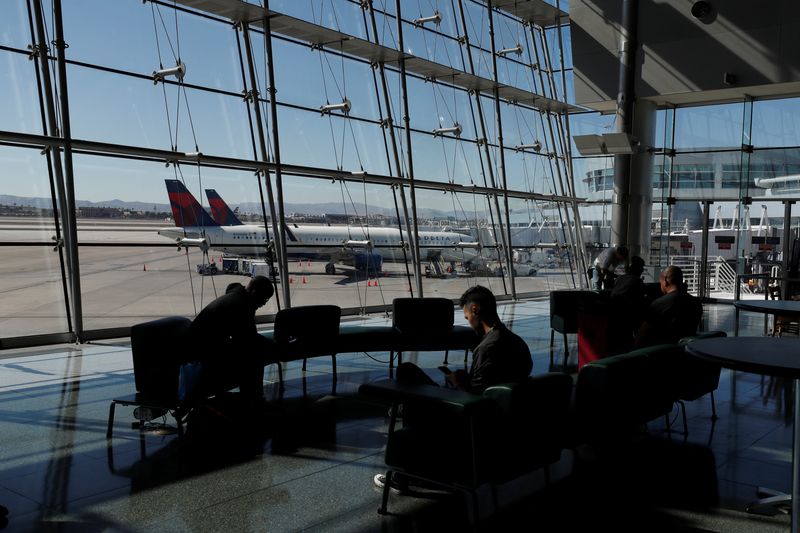
By David Shepardson
WASHINGTON (Reuters) -The U.S. Treasury Department said on Friday it planned to conduct a series of auctions to sell the warrants to purchase stock in U.S. airlines that it received after Congress approved $54 billion in COVID-19 air carrier assistance in 2020 and 2021.
Out of the $54 billion awarded, airlines were required to repay $14 billion. Treasury received warrants to purchase stock at the share price of the time of the government awards. Airlines accepting government assistance were prohibited from imposing furloughs or firing workers and faced limits on executive compensation and bans on stock buybacks and dividends that expired in September 2022.
American Airlines (NASDAQ:) received $12.6 billion in government assistance, followed by Delta Air Lines (NYSE:) at $11.9 billion, United Airlines at $10.9 billion, and Southwest Airlines (NYSE:) at $7.2 billion.
Seven other airlines received smaller awards, including $2.2 billion for Alaska Airlines.
According to a Reuters calculation, the warrants are worth about $478 million at Friday’s closing share prices. Many of the airline warrants are priced below the current trading prices of the carriers’ stocks.
Treasury held a call with airlines to inform them of the plan, airline officials said.
The U.S. government also extended $25 billion in low-cost loans to airlines.
Treasury said “the proceeds of these sales will provide additional returns to the American taxpayer from the financial assistance and liquidity that Treasury provided to these airlines during the pandemic.”
Delta and United declined to comment. The other major airlines did not immediately comment.
remove ads
.
The auctions are expected to commence the week of June 3, and the warrants can only be purchased by qualified institutional buyers, Treasury said.
Many other countries’ aviation COVID-19 assistance required a higher percentage of funds repayment, while other U.S. industries did not get the same government financial support.
The COVID crisis led to a historic collapse in air travel demand as U.S. air passenger travel fell by 60% in 2020 to the lowest level since 1984, down more than 550 million passengers, as airlines slashed costs and struggled to survive.
Since then, air travel has returned to pre-COVID levels and could hit a new record this year.


